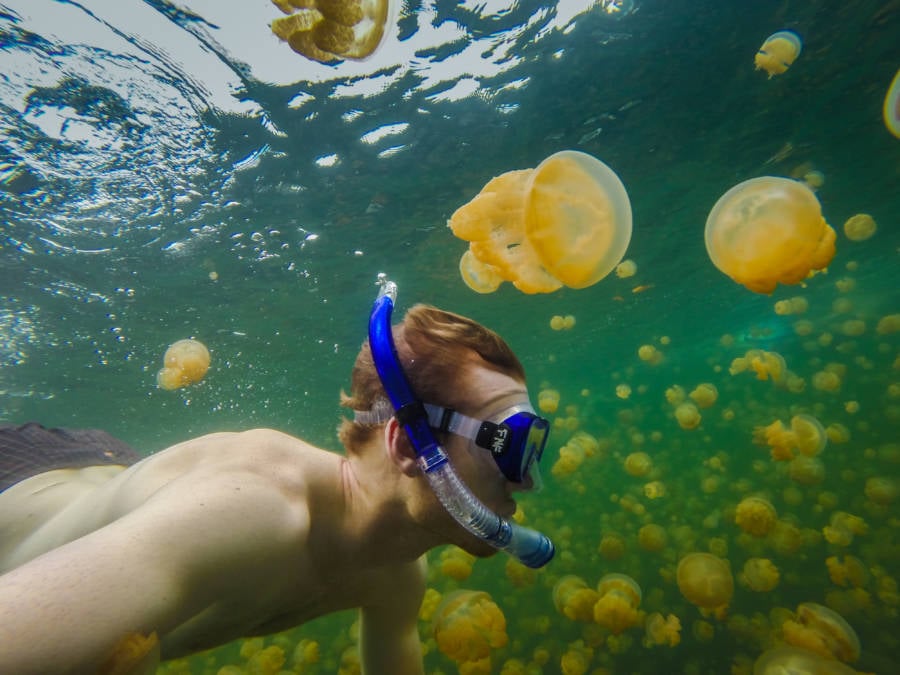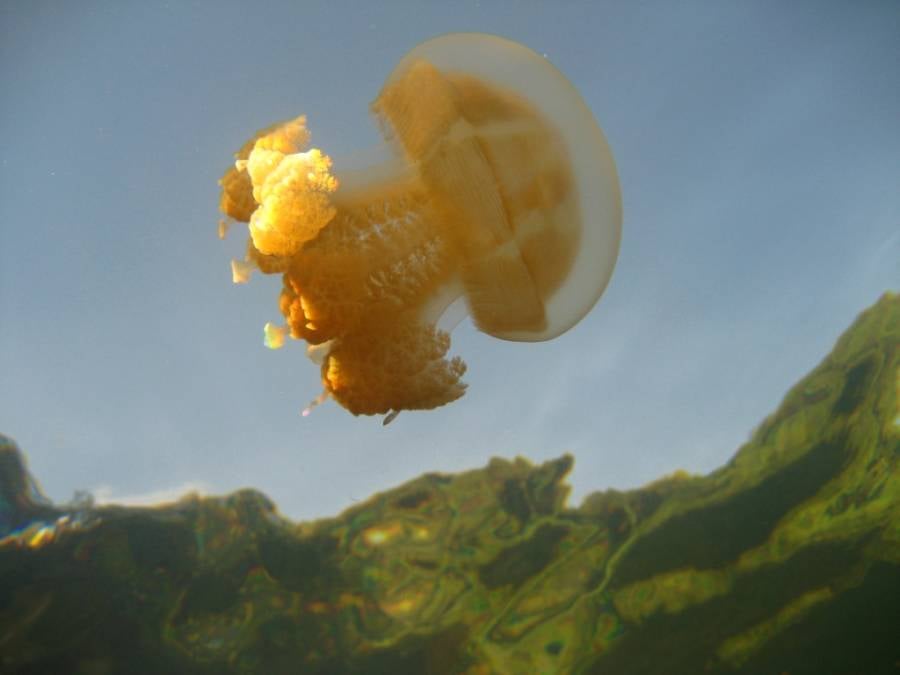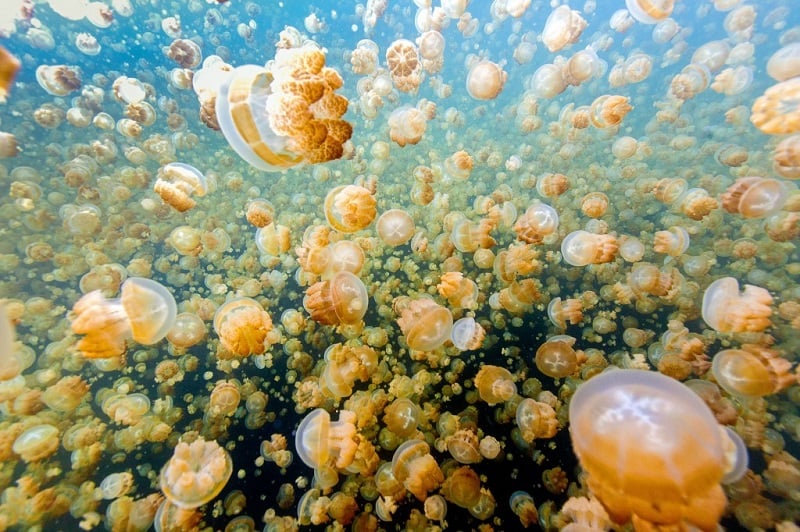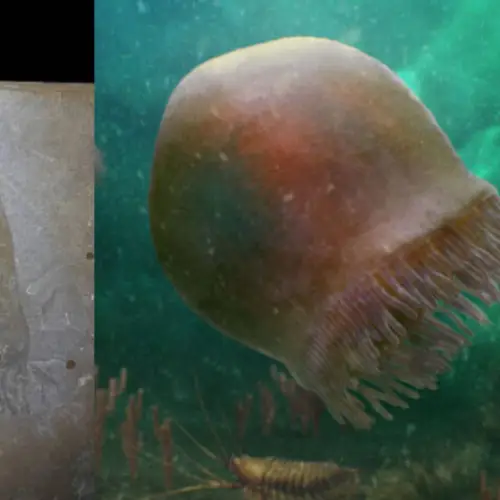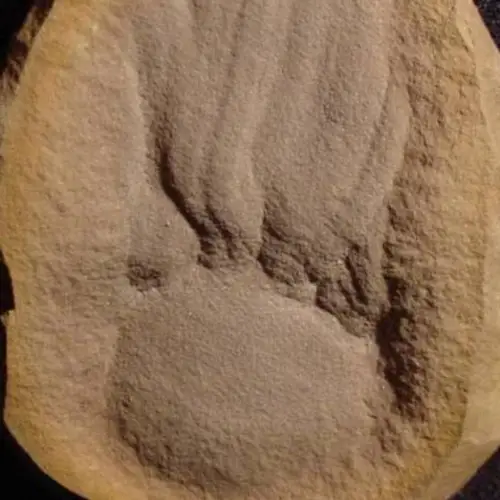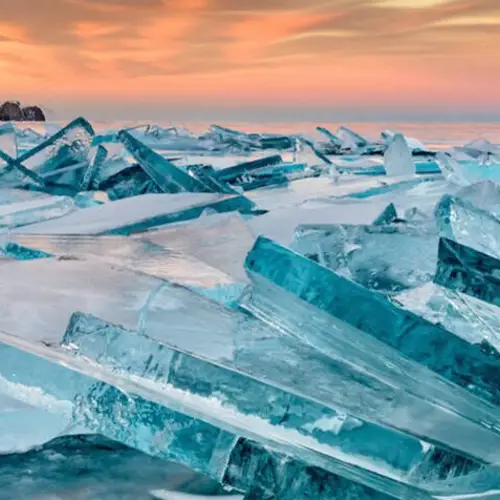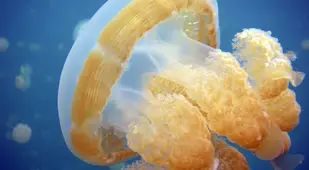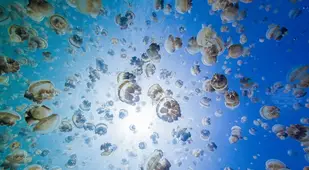Each day, millions of golden jellyfish follow the sun and migrate across the beautiful Jellyfish Lake on a remote island in the Pacific Ocean.
Each day, more than 5 million golden jellyfish perform a habitual migration within Jellyfish Lake, a remote marine lake on the island of Palau.
The Golden Jellies Of Jellyfish Lake

Richard Schneider/FlickrBeneath the placid surface of Jellyfish Lake hide millions of golden jellyfish. Palau is the only place these rare jellies are found.
While jellyfish are often known for drifting aimlessly at sea, these golden jellies propel themselves forward by pumping water through their golden bells. This daily dance draws numerous visitors to the Pacific island's Jellyfish Lake each year.
Each morning, the jellyfish congregate on the lake's western shore, waiting for the sun's arrival. As the day continues, the jellyfish mirror the sun's movement, propelling themselves from the western shore to the middle of the lake and, as the sun sets, back to the western bank.
By following the sun's familiar movements, the jellyfish avoid a major predator, anemones, which reside in the lake's shaded places.
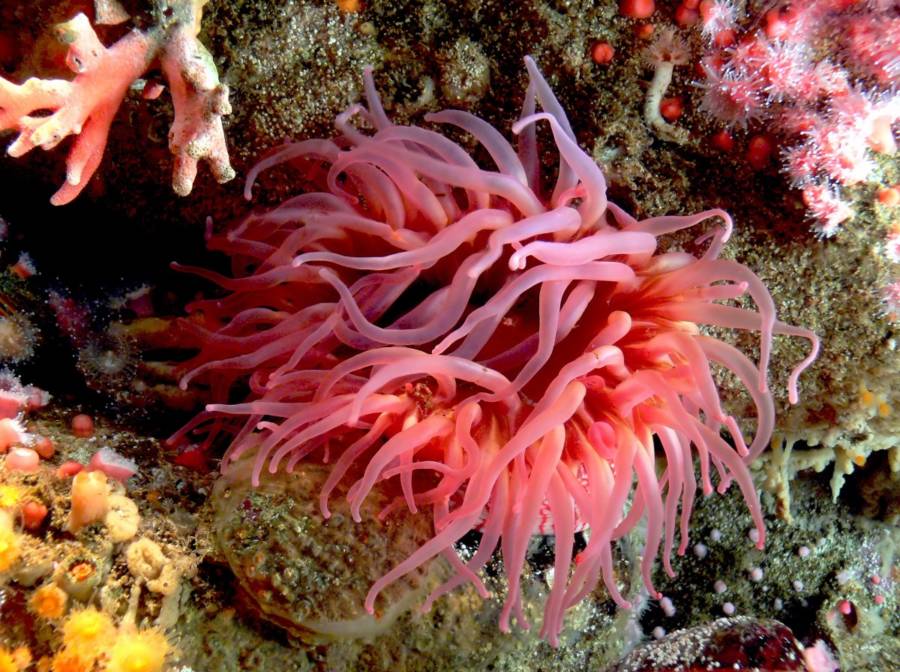
PxhereSea anemones, dangerous predators for jellyfish, lurk in the shadows of the lake.
The golden jellies of Jellyfish Lake are often thought to be stingless as a result of isolation and evolutionary changes in the centuries since the 12,000-year-old saltwater lake was formed.
This isn't quite true — the jellies do have stinging cells, but the sting is so mild as to pose no harm to humans. (It would take a lot of stinging before you even noticed you were under attack.) It's no wonder the lake is a popular snorkeling spot.
Migrating With The Sun

Wikimedia CommonsThe sun's rays provide important nutrients to the algae-like organisms that inhabit the jellyfish's tissues.
The unique migration that takes place in Jellyfish Lake is all caused by a need for direct sunlight. Golden jellyfish need sunlight to survive, as the sun's rays provide important nutrients to the algae-like organisms that inhabit the jellyfish's tissues.
Formally called zooxanthellae, these endosymbiotic dinoflagellates create energy through photosynthesis and provide that energy to the jellyfish in exchange for inorganic molecules.

Wikimedia CommonsIn years past, Jellyfish Lake was home to an estimated 5 million golden jellyfish.
Without the sun, these organisms would die, robbing their hosts of important, life-giving energy.
While the daily jellyfish migration is incredible in its own right, the migration pattern also plays an important role in the lake's ecosystem. Jellyfish Lake was once directly connected to the ocean, but now only fissures and deep tunnels connect the lake to the sea.
As a now-isolated seawater lake, the daily movement of the jellyfish stirs the lake water and distributes essential nutrients to various organisms, ensuring that the entire ecosystem survives.
Paradise Lost: Jellyfish In Decline

PxhereThe golden jellyfish population of Palau's Jellyfish Lake is currently in danger.
Unfortunately, these miraculous creatures are currently in decline. Though suspicion initially fell on several months of weak sunlight, scientists currently believe the problem is a sharp spike the salinity of the lake.
Drought and the warm weather brought on by El Niño, a weather phenomenon that warms the oceans, caused dramatic numbers of golden jellyfish to disappear in 2016.
Problems have persisted in recent years, with diving and tour cancellations plaguing vacationers and locals. As residents explain, there are sometimes simply no jellyfish to see.
There is, however, hope for the future. In 1999, Jellyfish Lake experienced similar declines — but the existing crop of young jellyfish, called polyps, were able to repopulate the lake in time.
The Delicate Ecosystem Of Jellyfish Lake
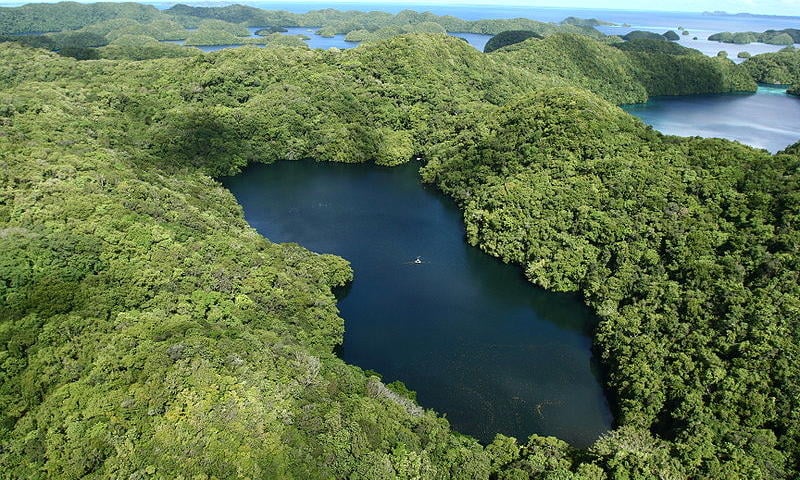
WikipediaPalau's Jellyfish Lake is now quiet, with snorkeling and swimming banned in order to give the golden jellyfish population time to recover.
The larger existential threat of global warming still looms. The golden jellyfish are incredibly sensitive to changes in their environment — and they're a vital part of this rare saline meromictic lake.
Jellyfish Lake, unlike most lakes, has distinct layers that never mix. The rocks and growth around the lake make for little wind, and the tropical climate that visitors enjoy means seasonal temperature variations are minimal.
As a result, the oxygenated water on the surface never replaces the deepest, darkest waters near the lakebed — hypoxic waters full of poisonous hydrogen sulfide. And the middle layer, a wash of pink bacteria several meters deep, never rises or sinks.
It is only one of 200 lakes of its kind in the world, and it's the only lake with golden jellyfish.
Drastic Measures To Protect The Jellies
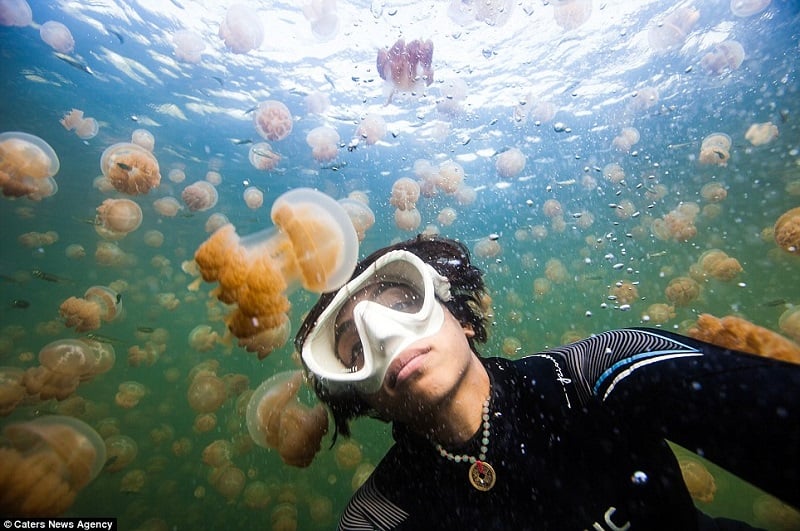
DailymailWhere snorkelers once swam with millions of jellyfish, the lake's waters are now empty.
In order to put as little strain as possible on the golden jellyfish population, all swimming and snorkeling at Jellyfish Lake have been prohibited. (Scuba diving was never allowed because it could mix the layers of the lake and result in dangerous chemical changes to the habitable upper layers.)
You can, however, continue to enjoy Jellyfish Lake on foot; hiking is permitted in the area around it. Will you see a jellyfish? Unfortunately, probably not.
The last medusa (that is, the last fully matured jellyfish with a bell and tentacles) was seen in the spring of 2016.
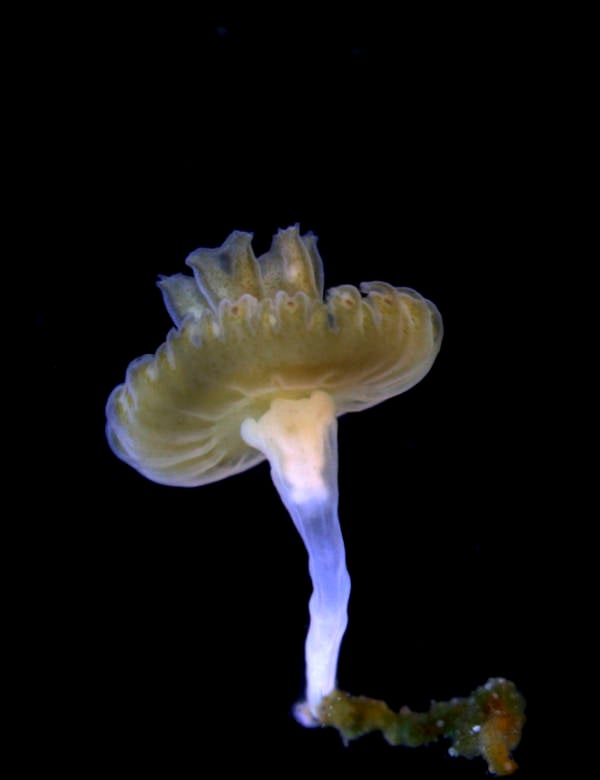
Wikimedia CommonsJellyfish polyps cluster around the edges of the lake, usually at a depth of about 10 meters.
There is, however, the beginning of a new population. Older, free-floating jellyfish in the medusa stage produced larvae that settled along the lake's edges. These settled larvae are called polyps, and though the older jellyfish have died off, these two-millimeter seedlings are still around.
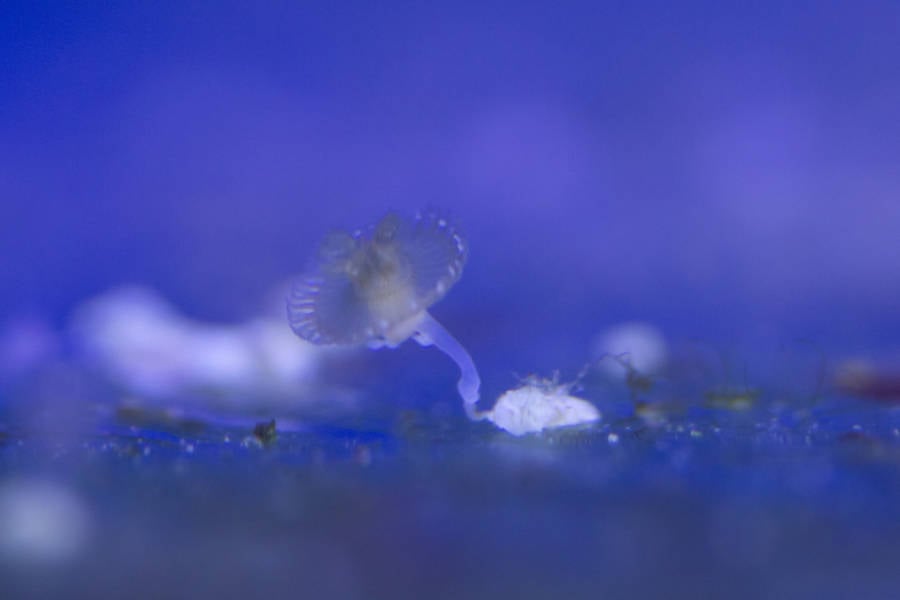
Dan Bowes/FlickrA jellyfish polyp, now the hope for Jellyfish Lake's future.
As they feed and grow bigger, they will eventually release ephyra larvae — the beginnings of mature jellyfish. With any luck, in a few years' time, the lake will be full of beautiful golden jellies once again.
Though you can't swim with the jellyfish right now, you can enjoy the photos and videos of past swimmers — and think good thoughts for those little polyps, who are working hard to repopulate Jellyfish Lake.
Fascinated by polyps and medusas of Jellyfish Lake? Check out 35 insane jellyfish facts, or learn more about the world's weirdest bodies of water, like Canada's spotted lake.



